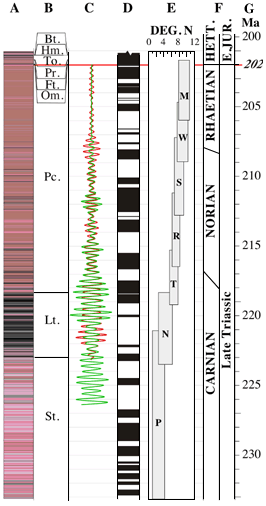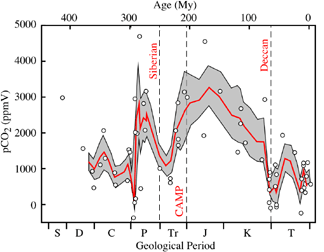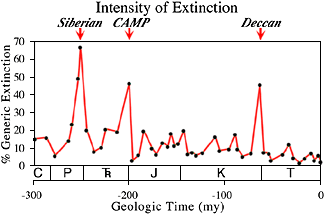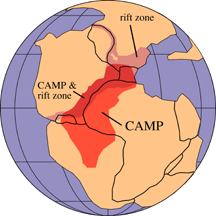 |
A high-resolution record of one of these basins, the
Newark rift basin of New York, New Jersey, and Pennsylvania, USA, has already
been recovered in nearly its entirety in 6700 m of core by the US National
Science Foundation funded Newark Basin Coring Project (NBCP) (Fig. 2.4).
Analysis of this record produced the longest continuous record of astronomical
climate forcing in the World, which in turn led to the development of an
astronomically tuned geomagnetic polarity time scale for the Late Triassic
and earliest Jurassic spanning roughly 31 million years (Olsen et al.,
1996; Kent et al., 1995; Olsen and Kent, 1996, 1999; Kent and Olsen, 2000a).
Subsequent studies have shown that this time scale can be used for high-resolution
correlation to other areas, hundreds to thousands of kilometers distant
(e.g. Kent and Olsen, 1997; Olsen and Kent, 2000b; Kent and Clemennson,
1996). The NBCP and related work demonstrates that it is possible to obtain
records equivalent in quality to those from the Neogene, but at a spatial
and temporal scale hitherto unavailable. This fine-scale temporal framework
should allow exploration of major events and processes at unprecedented
precision and scale.
It is within this exciting new context that the ICDP and
US NSF funded workshop was held to develop a community-based, prioritized
science plan including the identification of coring targets along a largely
pole to pole transect of Triassic-Early Jurassic Pangea. It is only with
continuous core that the extremely large magnitude global events and processes
can be examined at appropriate (large and small) levels of temporal and
spatial resolution.
|
| Figure 2.4 (left): Newark basin time scale: A, Rock Color;
B,
Formations (Bt., Boonton Fm.; Hm, Hook Mt. Basalt; To., Towaco Fm.;
Pr., Preakness Basalt; Ft., Feltville Fm.; Om., Orange Mountain Basalt;
Pc., Passaic Fm.; Lt., Lockatong Fm.; St., Stockton, Fm.); C, Filtered
lake depth proxy (red) and rock color (green) showing the 404 ky lake-level
cycles; D, Astronomically calibrated geomagnetic polarity sequence;
E,
Paleolatitude of the coring sites though time; F, Relative Ages;
G,
Numerical age based on astronomical calibration and radiometric ages from
the basalts. Based on Kent and Olsen (1999) and Olsen and Kent (1999). |
|



